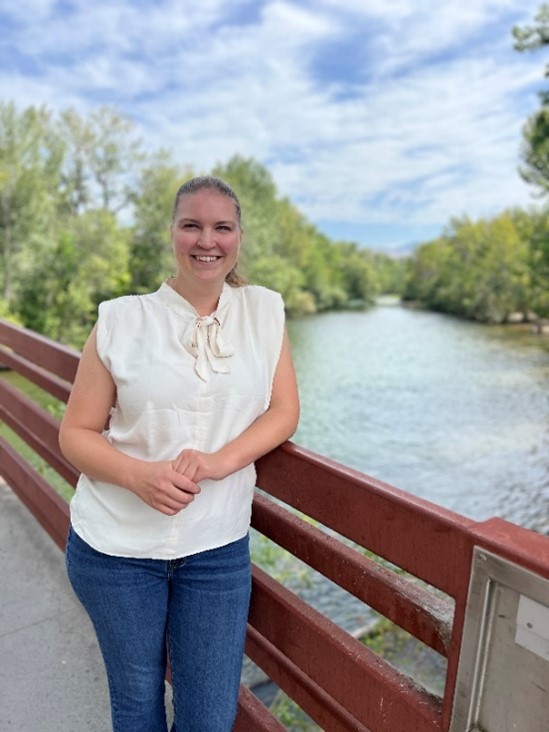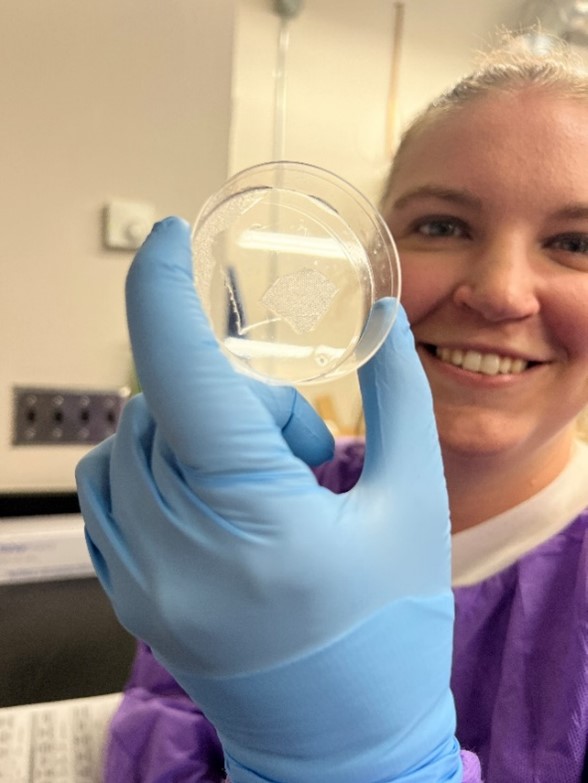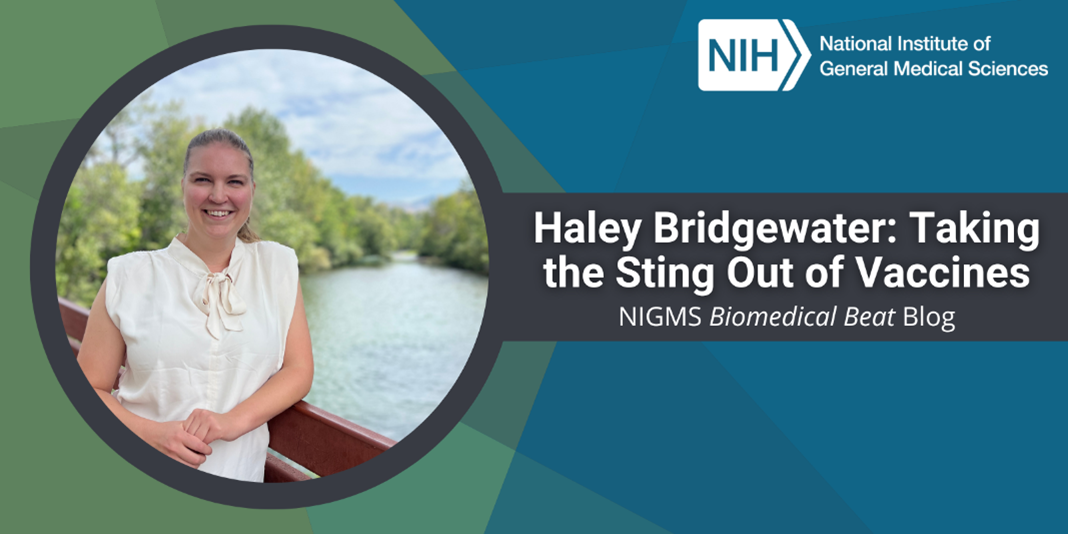Haley Bridgewater, a graduate student at Boise State University in Idaho, is sure she wants to continue studying infectious diseases after she graduates with her Ph.D., but she’s finding it difficult to choose a specific topic within that branch of biomedical science. “My problem is that I like them all. The more I look into specific research topics to narrow down my options, the longer my list of potential topics grows,” she says.

Haley’s early introduction to science wasn’t related to the biological sciences at all. She grew up in Los Alamos, New Mexico, where her dad studied nuclear chemistry. Discussions about chemistry, physics, and rockets surrounded her, and she would often stare up at the night sky to catch a glimpse of a meteor shower or the International Space Station passing by. But she was even more curious about what was below her feet: What makes an insect different from a rock? What does the microscopic world look like? She received a microscope one year for her birthday and carried it with her everywhere so she could try to answer these questions.
Global Experiences
Haley took an advanced biology class in high school, where she learned not only about the living world, but also the many exciting scientific careers available, such as becoming a researcher. She moved to Tacoma, Washington, and earned a bachelor’s degree from Pacific Lutheran University (PLU), where she majored in biology and global religion.
After graduating from PLU, Haley entered the Peace Corps, an organization that matches volunteers with host communities around the world to promote change in areas such as agriculture, education, and health. She traveled with the Peace Corps to Botswana, a country in southern Africa, to increase awareness of HIV through community building. She worked in a social work office and taught an after-school program at a local library.
“Volunteering with the Peace Corps was an incredible experience,” Haley says. “Strong community networks can prevent a lot of infectious diseases, but I saw that the infrastructure in place to prevent HIV just wasn’t strong enough.” This observation led her to go back to school to earn a Ph.D. and become a researcher.
Microneedle Technology
Now, Haley is in her fifth year of graduate school working on vaccine development with Juliette Tinker, Ph.D. A vaccine creates an immune response to a specific microbe, like a virus, by exposing the immune system to a harmless subunit of the microbe, such as a protein. After vaccination, if a person is exposed to the same microbe, their immune system will remember it and fight off the infection faster.
Many of the ongoing projects in Dr. Tinker’s lab aim to design vaccines with an adjuvant—a substance that increases a vaccine’s efficacy by boosting the immune response it creates—made from a toxin produced by the bacterial species Vibrio cholerae. The research team removes the toxic portion of the molecule so that they’re left with a subunit, called the cholera toxin B subunit (CTB), that they can safely use in any vaccine.
Haley is designing a vaccine to prevent bacterial infections caused by Staphylococcus aureus (S. aureus). In humans, S. aureus (commonly called Staph) can cause many types of infections, including skin or bone infections, especially in people undergoing surgery. Unfortunately, antibiotics can’t easily treat S. aureus infections because many of the bacteria have developed antibiotic resistance, making it important to find a way to prevent infections.

The vaccine, which Dr. Tinker’s lab is still testing, combines the adjuvant CTB and a protein specific to S. aureus. But instead of being delivered by a traditional needle, it’s delivered using a small dissolvable patch. The patch contains microneedles made of sugar that only pierce the outer layer of the skin, causing less skin damage, pain, and other symptoms (such as swelling) than traditional needles cause. With no needle, these patches may also reduce some of the anxiety associated with traditional vaccines, which can be a big deterrent for some people. And microneedle patches help stabilize the vaccine’s components, reducing the need for refrigeration, which could make it easier to distribute around the world.
S. aureus also commonly infects diary cows, causing swelling of the udders and a decrease in milk production. “As we started to design a vaccine to prevent S. aureus, we also recognized how it impacts the dairy industry,” says Haley. “We wanted to take the One Health approach—the idea that the health of animals, people, and the environment are all connected—and design a vaccine that could be used in both humans and dairy cows.”
Idaho INBRE
Haley credits NIGMS’ Institutional Development Award (IDeA) Networks of Biomedical Research Excellence (INBRE) program for much of the research support she’s received on the microneedle project. INBRE funds statewide networks of higher education and research institutions in IDeA states, such as Idaho, to build biomedical research capacity through support for faculty research and mentoring, student participation in research, and research infrastructure enhancement.
The Idaho INBRE funds core facilities at Boise State University, such as the 3D printing lab, that Haley has used for her research. “The INBRE program is integral for research at Boise State. Being part of such a small university, our labs really rely on those cores. The microneedle project has drawn on almost ever INBRE-funded core here,” she says. Haley received additional research funds through the Idaho INBRE Data Science Core Technology Access Awards, which she used to collect the microscopy images she needed for the project.
Being connected to the core facilities has had an added benefit—the feeling of community. “The microneedle project has become a collaborative project across campus that so many people are invested in. I’ll run into people in the hallways, and they’ll ask how the project is going,” says Haley. With their support, she knows she can complete her Ph.D. work and even decide on her next research topic.
The Idaho INBRE is funded through grant P20GM103408.







